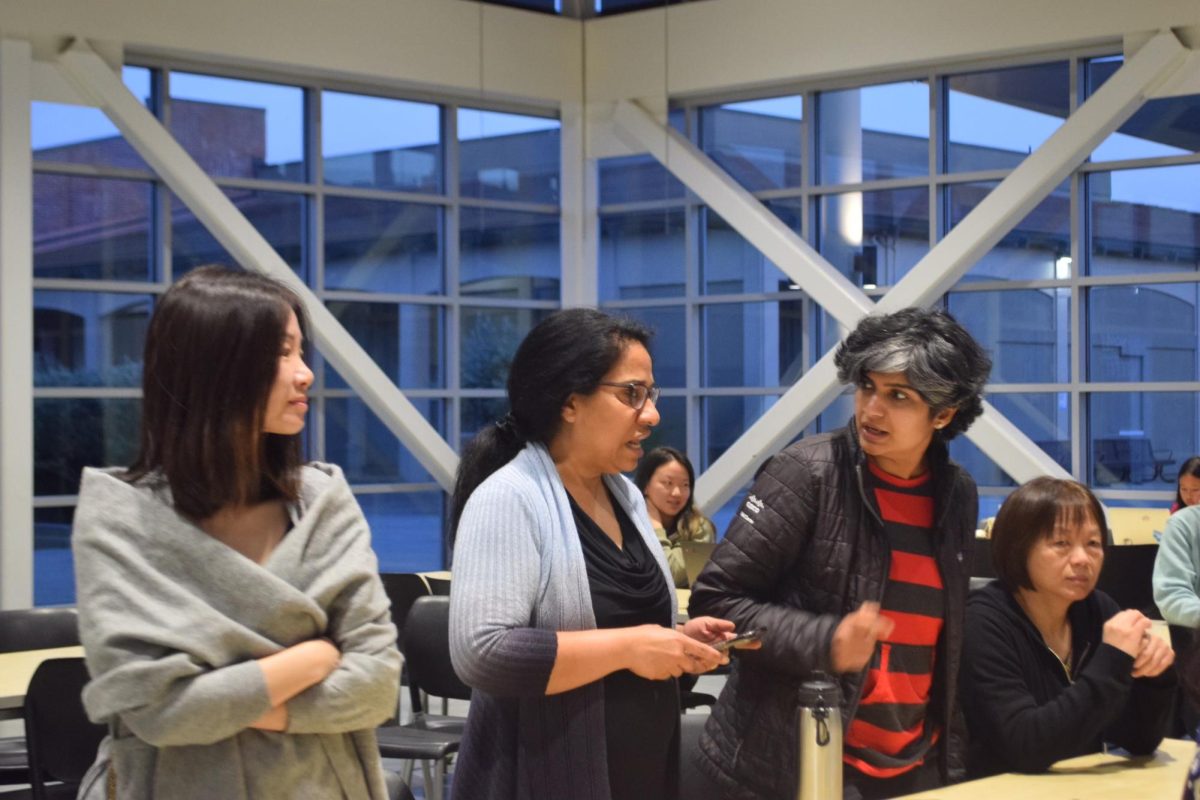After an hour-long lecture, most students either feel more knowledgeable or like they wasted the last 60 minutes of their day doing nothing. More often than not, it’s the latter. Teachers soon realize through tests scores, assessments and student engagement that lectures alone simply don’t work and that new ways of learning need to be implemented. To combat this problem, AP Chemistry teacher Kavita Gupta started her own separate platform for teaching through technology.

The homepage of Gupta’s AP Chemistry website
Gupta designed her own website that can be accessed through MVHS’ home page. The site has a calendar for upcoming assignments, practice resources, links to chemistry animations and her own personal lecture podcasts where she goes over topics covered in class. After lessons and lectures during the school day, the website serves as a way for students to reflect upon and add to the concepts taught in class.
“I think this model makes for a more engaging teaching and learning environment,” Gupta said. “There is evidence that this model is working.”
In fact, since she implemented podcasts into her teaching, she has seen a rise in AP test scores and student grades.
“I have seen a huge shift. In the past, kids got tired and were disengaged, so it was hard to see if they were really learning,” Gupta said. “Now, kids are actually doing things and not hiding behind other students.”
Apart from simply seeing test scores and results rise, Gupta believes that the biggest impact her system has on students is how much it will prepare them for college and the future.
“There is a lot more responsibility on students to be a self manager, to make sure that they watch the podcasts,” Gupta said. “They will learn soon in college that if they don’t do their bit it will come back to bite them.”
While AP test scores and class grades point towards success, there have also been a few downsides.
“When students are watching the videos, they don’t have the luxury to ask their questions in real time so they have to be good about taking questions,” Gupta said. “Some kids like that instant gratification, so it is hard to create a balance.”
Yet, Gupta believes that she can use feedback to help the system grow and improve. In fact, more and more classes and students are now using technology and websites to foster their students’ education.
“I certainly have a lot of ideas and they will take time to implement,” Gupta said. “At the same time I know that physics started doing this a couple years ago and I know bio is picking it up. It’s a very powerful tool that can really add on to what students learn in class.”







